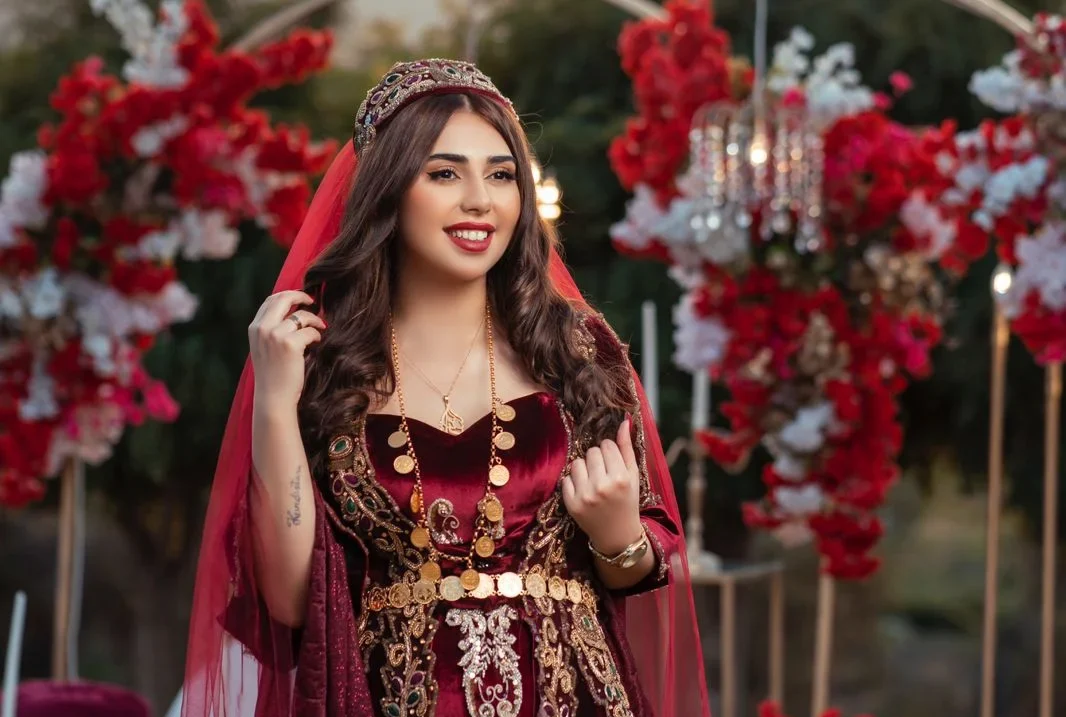Paris, Forever the Capital of Fashion
Paris Fashion Week 2025 Analysis, Heritage Reimagined, Modernity Redefined
By Cynthia Mansour
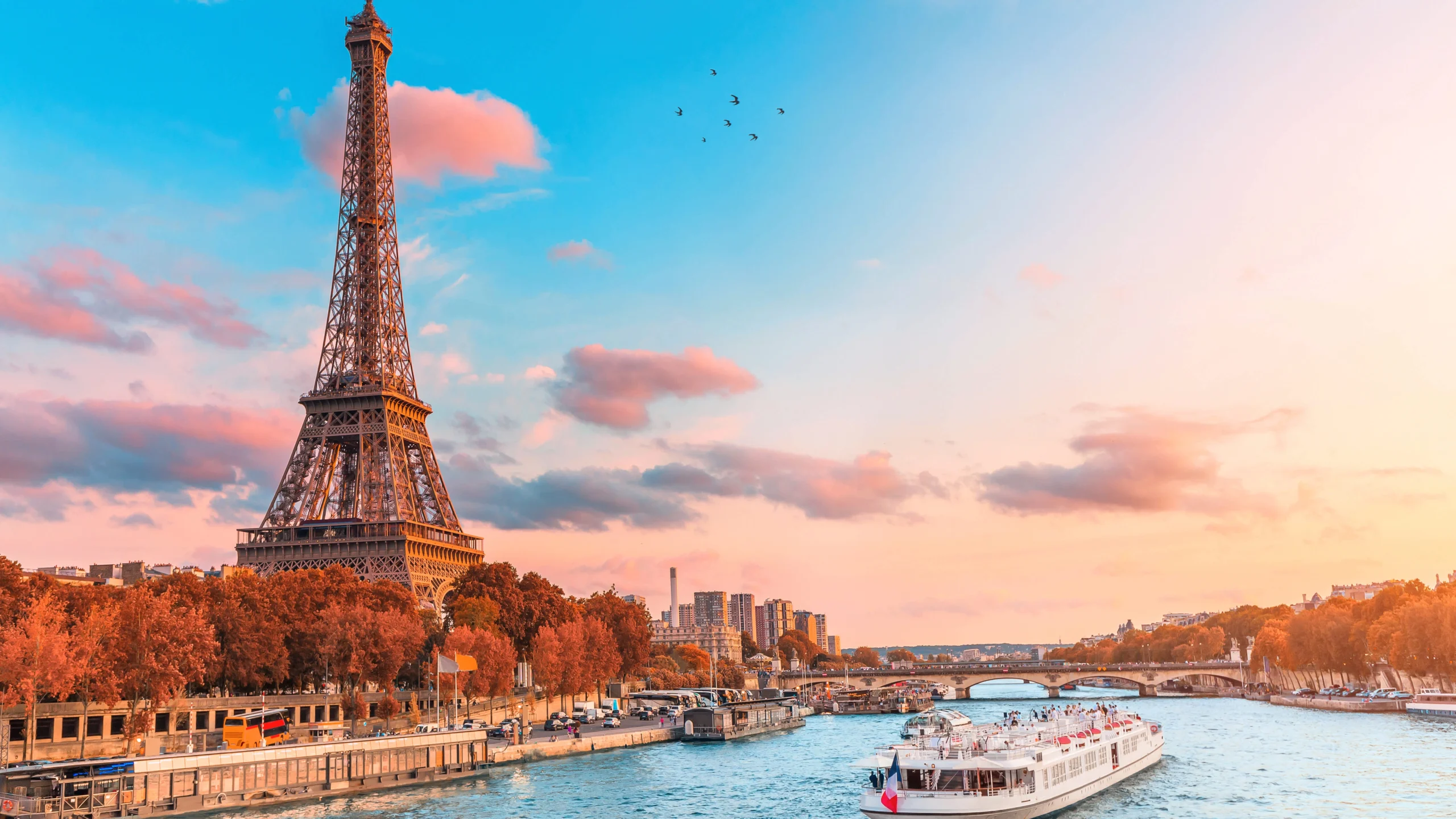
Paris Fashion Week, and what other city could better give justice to the essence of fashion? Paris has always been the beating heart of haute couture, the birthplace of timeless Maisons and Modern Luxury. When you say Paris, you are inevitably calling Fashion.
This year, the 2025 edition of Paris Fashion Week showcased the Spring/Summer 2026 collections, featuring an impressive lineup of brands such as Dior, Mugler, Loewe, Balenciaga, Jean Paul Gaultier, Chanel, Saint Laurent, Louis Vuitton, Balmain, Chloé, Alexander McQueen, Hermès, Courrèges, Acne Studios, Alaïa, Rabanne, and many more. A total of 74 runway shows and 37 presentations filled the calendar, two formats that together reflected both the grandeur and craftsmanship of the industry.
Both men’s and women’s collections were presented under the creative direction of the world’s finest art directors, each determined to leave their mark through art, emotion, and spectacle.
What made this year truly special was the unprecedented wave of creativity and boundary-breaking vision. The season welcomed several creative directors and designers, each breathing fresh life into iconic Maisons: Jonathan Anderson at Dior, Matthieu Blazy at Chanel, Pierpaolo Piccioli at Balenciaga, and the dynamic duo Jack McCollough & Lazaro Hernandez at Loewe. Everyone brought their soul to the runway, a feeling, an emotion, a story that spoke to every person watching.
Every brand reflected its commitment to evolution, resilience, and the changing rhythm of modern life. Some Maisons chose reinvention, bending tradition to contemporary sensibilities, while others reconnected with their roots, reminding us that fashion is freedom, movement, and the courage to dream.
If Paris Fashion Week could be summarized in one word, it would be “Dynamic.” The energy pulsed between brands, each show offered something daringly new, each narrative unfolded in its own rhythm.
Trends and Themes: When Color Speaks and Eras Collide
The Spring/Summer 2026 collections were marked by bold color statements and limitless creativity. Designers explored palettes without boundaries and silhouettes without beginnings or ends.
At Loewe, primary hues dominated the runway: red, yellow, and blue danced together on structured knits and fluffy leather pieces. Miu Miu looked back to the 1980s, reimagining workwear through printed aprons and floral skirts in offbeat tones. Akris celebrated modernism with geometric blocks of color on refined silhouettes, while Celine injected bursts of cherry red, royal blue, and bright yellow through silk scarves, logo sweaters, and jacquard minis, a modern twist on Parisian polish.
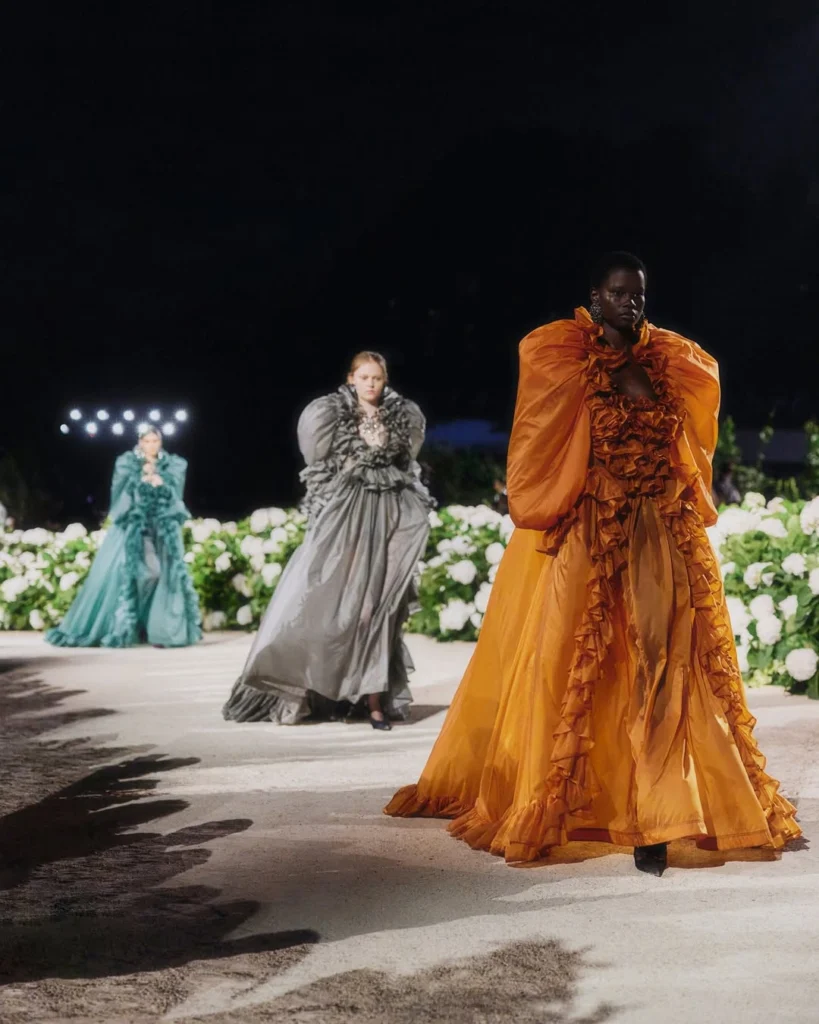
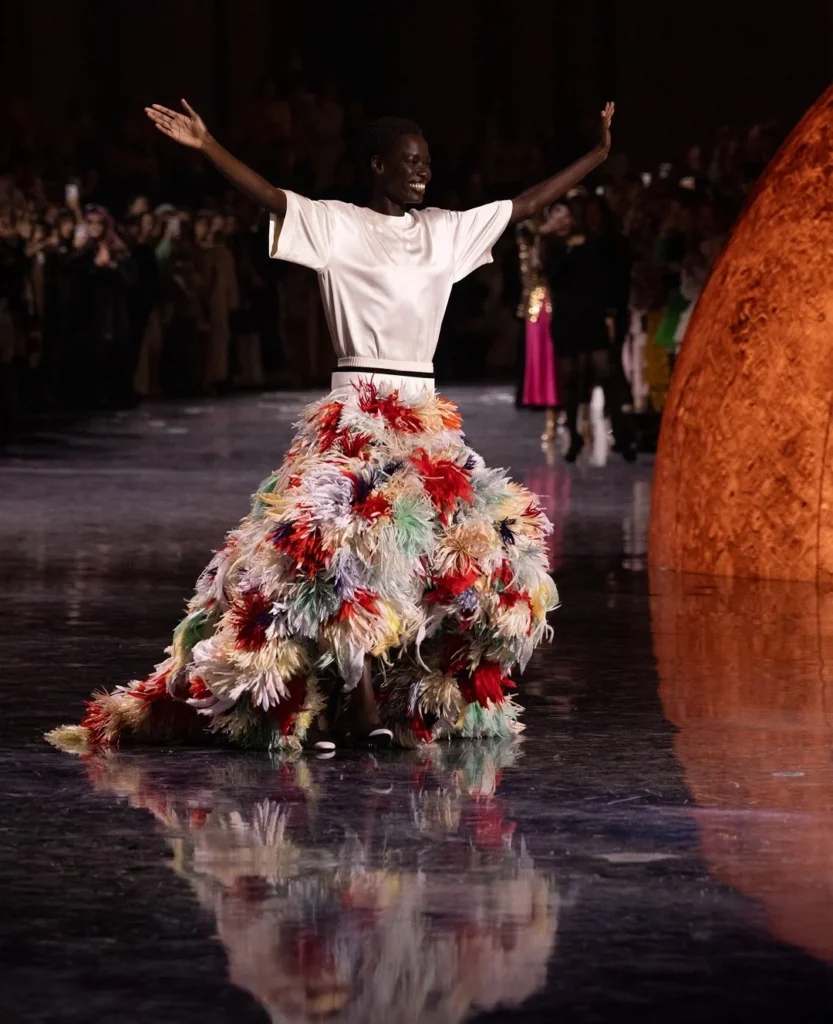
Many houses embraced luxury and lavishness, each expressing opulence in its own language. Saint Laurent revisited the 1980s with satin bomber jackets, voluminous pussy-bow blouses, oversized shades, and jewels of garnet and amber: cinematic, seductive, and unmistakably powerful.
Valentino fused the glamour of the ’70s and ’80s through sequined gowns and draped silks, while Chloé took us on a nostalgic journey from the sweet 1950s florals to dramatic 1980s draping and rushing, crafting silhouettes rich in texture and emotion.
Each Maison reinterpreted the past through its own lens, reminding us that fashion is eternal without expiration, without confinement. The old days are indeed good days, and Spring/Summer 2026 proved that inspiration from the past remains timeless.
At Chanel, Matthieu Blazy elevated the show into a new realm of artistry. Models glided across a stage glowing like liquid gold, wearing modernized tweed ensembles infused with metallic threads, celestial silhouettes, and accessories radiating craftsmanship. Chanel, once again, defined the era of luxury itself.
Other notable motifs emerged across runways, high-neck silhouettes, cascading feathers, intricate fringe details, and a return of Gothic glamour. The diversity of aesthetics, from celestial golds to moody blacks, showcased a season where contrasts thrived and beauty took every form imaginable.
Stars of the Front Row
Paris Fashion Week would not be complete without its dazzling audience. As expected, celebrities, influencers, and cultural icons descended upon the City of Light.
Zendaya and Emma Stone graced the Louis Vuitton front row, while Penélope Cruz, Margot Robbie, Tilda Swinton, Marion Cotillard, and Nicole Kidman brought elegance to Chanel’s presentation. Kendall Jenner appeared both on and off the runway, while Kylie Jenner turned the Paris streets into her personal catwalk. Hailey Bieber, Zoë Kravitz, Karen Wazen, and BLACKPINK’s Lisa also made striking appearances, each influencing millions through their looks and presence.
Their attendance was more than celebrity spectacle; it symbolized fashion’s dialogue with pop culture, technology, and media. Each appearance, each outfit, became a viral statement, extending the reach of Paris Fashion Week beyond its front-row seats.
Beyond the Runway: Street Style, Backstage, and the Paris Pulse
Outside the shows, the streets of Paris transformed into living runways. Fashion editors, influencers, and locals redefined everyday elegance, combining timeless French staples with emerging trends.
Backstage, the energy was electric. Designers, models, and glam teams worked tirelessly to perfect every look, transforming anxiety into artistry. Cameras flashed endlessly as hair, makeup, and fabric came together in organized chaos. Every seam, every fitting, every stride told the story of collective passion.
And when the lights dimmed, Paris came alive with celebrations. From exclusive brand dinners to star-studded after-parties, every night was a continuation of the art seen on the runway. Poetic soirée, laughter, creativity, and champagne flowed, sealing another unforgettable week for the fashion world.
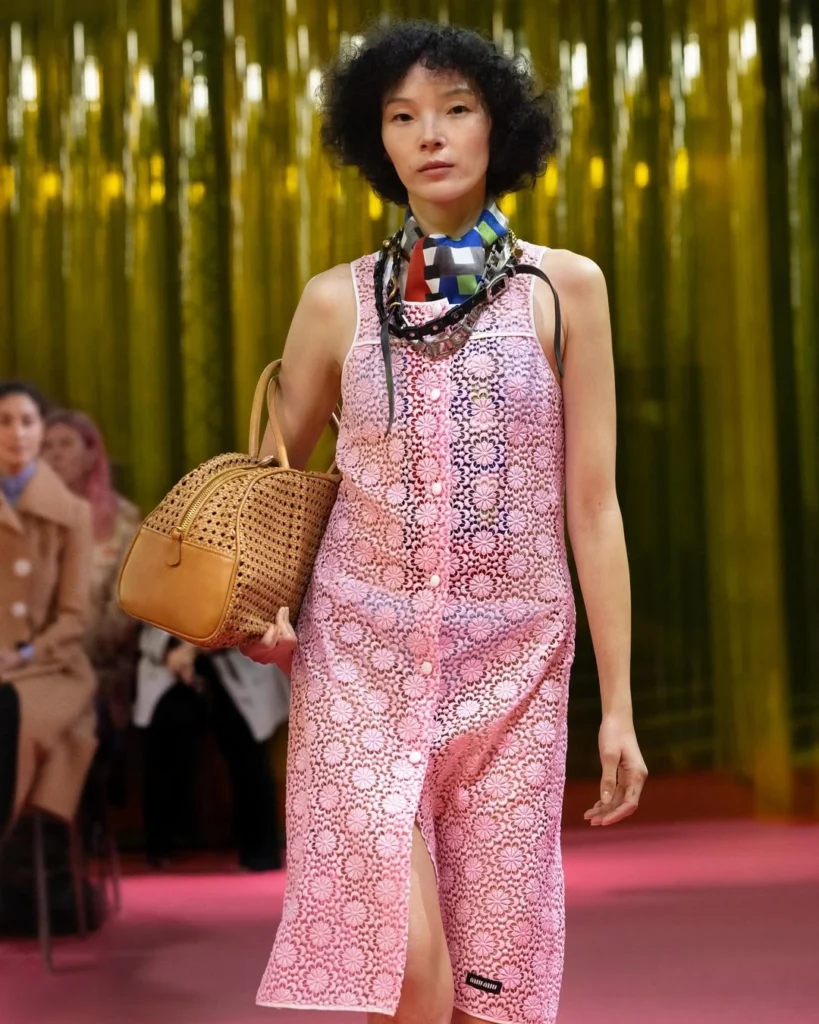
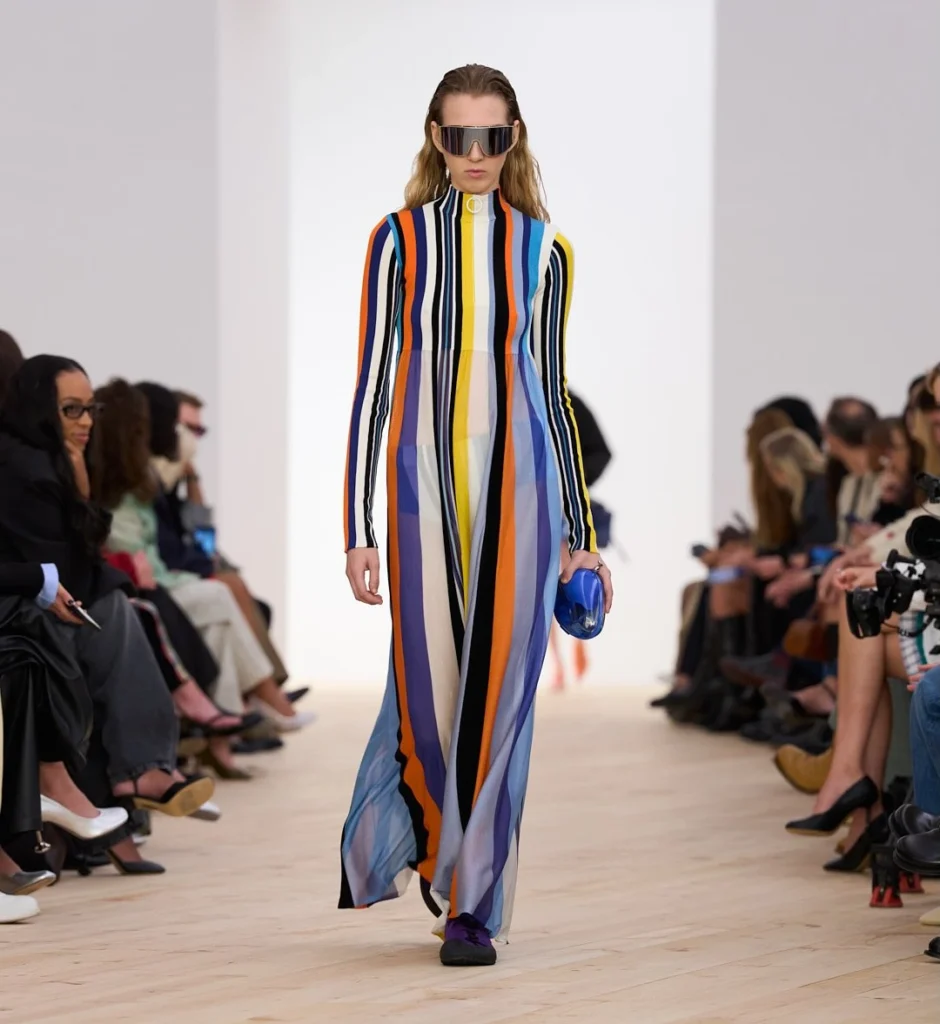
A City that Breathes Fashion
For those watching through screens or from the crowded streets, opinions were divided, some praised the revival of vintage glamour, others debated the bold risks designers took. But one thing was undeniable: Paris Fashion Week continues to surprise, inspire, and redefine the very codes of modern fashion.
This season went beyond the runway. It was not merely a presentation of garments but a performance of ideas, a dialogue between heritage and innovation, between the comfort of nostalgia and the thrill of what’s next.
Every collection echoed a new attitude, a statement that fashion today is not just about trends, but about vision and purpose. It was an invitation to feel, to think, and to dream.
From the artistry of tailoring to the poetry in every silhouette, Paris reminded the world that fashion is a language: one that speaks through texture, color, and emotion. It reflected how society evolves, how creativity responds, and how individuality takes form.
Fashion is not just what we wear; it’s emotion, identity, and vision.
It is the art of expressing who we are and who we aspire to become.
And in 2025, Paris once again proved why it remains the eternal capital of style, where imagination walks before the world even begins to follow.


